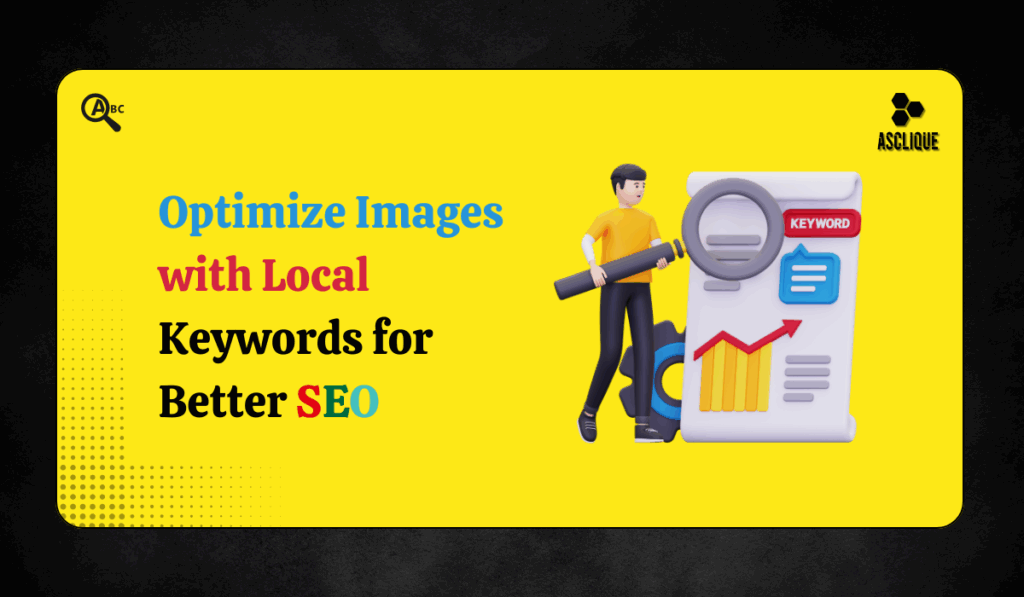If you’re a local entrepreneur or a website owner with customers in specific locations, then optimizing images with local keywords can significantly boost your local SEO. Humans tend to forget that search engines such as Google not just read your site’s text but also check the images — their names, alt texts, and the content around them.
If executed properly, local image optimization can get your website to appear in local search results, image search, and even Google Maps directories. Let’s break down all that you need to know to start.
Why You Should Optimize Images with Local Keywords
Images aren’t just for looks—they are also powerful SEO assets. According to Moz, optimized images can increase visibility and drive 12% more traffic from search engines.
When your business focuses on a local audience—whether it’s a city, neighborhood, or region—using local keywords in your images helps Google understand where your business operates. This gives you a better chance of showing up in local image results, especially in searches like:
- “Best cupcakes in Brooklyn”
- “Chiropractor near downtown Austin”
- “Floral delivery in Kuala Lumpur”
If your images include optimized metadata with those kinds of terms, they stand a better chance of showing up in search, bringing more potential customers to your site.
How Images Impact Local SEO
Google wants to offer users the most relevant content. If someone searches for a product or service “near me,” Google uses all kinds of data signals to figure out what’s most helpful—including your website’s images.
Well-optimized images help search engines:
- Understand what the image is about
- Match visual content with search queries
- Place your content higher in local results
Images with local keywords also give you a competitive edge when users click the “Images” tab on Google or use voice search, which is increasingly location-based.
Choosing the Best Local Keywords for Your Images
Before uploading any image, take a moment to think about what your potential customer might be searching for. Use tools like:
- Google Keyword Planner
- Ubersuggest
- SEMrush
- Google Autocomplete
Look for terms that combine your service or product with a location, such as:
- “Organic bakery in Miami”
- “Wedding planner in Dallas”
- “Auto repair shop in Pune”
Aim for specific neighborhood or district names instead of just cities. These have lower competition and are more relevant for hyperlocal SEO.
Renaming Image Files with Local Keywords
Many people upload images named like IMG_4537.jpg, which tells Google nothing. Instead, use descriptive, keyword-based file names.
Example:
Bad file name: IMG_1090.jpg
Good file name: wedding-planner-los-angeles.jpg
Keep it simple and readable. Separate words with hyphens, and avoid keyword stuffing. Google reads this file name as a clue to what the image is about.
Optimizing Alt Text with Local Keywords
Alt text does two big things:
- It makes image content accessible to visually impaired individuals.
- It provides Google with more context on the image.
Your alt text should be brief, concise, and naturally contain your local keyword.
Example:
Alt text: “Handmade birthday cake in Chicago”
This not only benefits accessibility but also assists your local SEO.
Using Captions and Titles to Support Local Image SEO
Captions are the text that appear under pictures, whereas image titles are additional metadata. They both provide you with a chance to reinforce local context.
Don’t stuff keywords into all captions—but use them when it’s appropriate.
Example caption:
“Our signature floral bouquet arrangement delivered to homes in Kuala Lumpur”
It communicates to both users and search engines what the picture is about and where your service is based.
Geotagging Images for Enhanced Local Visibility
Geotagging adds geographical data to your images—like latitude, longitude, or even place names. This helps Google associate your content with a specific area.
There are free tools like:
- GeoImgr
- Pic2Map
- Adobe Bridge (for advanced users)
After geotagging, upload your image to your website or listing platform. This extra layer of local data increases your relevance in local search results.
Tools to Optimize Images with Local Keywords Easily
You don’t need to do all of this manually. Here are some tools that will make it simpler:
- ShortPixel / TinyPNG – Compress images without compromising quality
- Yoast SEO (WordPress) – Makes it easy to edit alt tags and metadata
- GeoImgr – Geotags your pictures with local information
- Rank Math SEO Plugin – Excellent for image optimization and local SEO
- Canva Pro – Enables you to insert descriptive file names and alt text
Implement image SEO in your content process. It only adds a few minutes to each image, but the return in visibility and engagement is worth it.
Conclusion
Pictures are not just visual content—they’re part of your search engine optimization strategy.When you optimize images with local keywords, you’re making your business appear where you need it to: in your local community. From re-naming your image files and crafting clever alt text to geotagging and captioning well, it all adds up.
As image SEO becomes increasingly prevalent, so too will the use of image SEO. Make these changes today and see your visibility increase—both for image results and for local search rankings.
FAQ’s
What are local keywords in image SEO?
Local keywords are geographic keywords such as city names, districts, or neighborhoods that assist with targeting local customers.
How many images should I optimize on my website?
Ideally, all images should be optimized—particularly those on your homepage, product pages, and blog posts.
Can I use the same local keyword for every image?
Don’t use the same keyword over and over. Use variations to remain relevant without keyword stuffing.
Is geotagging images really necessary for local SEO?
It’s not required, but it certainly provides an added signal that enables search engines to tie your content to a physical location.

